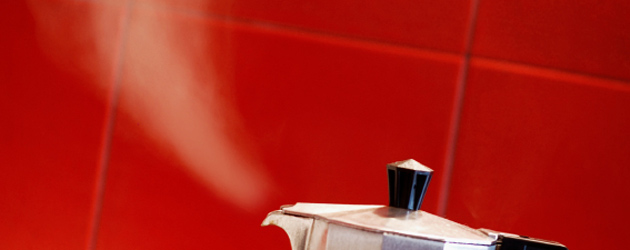When I first laid hands on a Bialetti Moka – also known as “Stovetop coffee maker,” “Italian espresso maker,” and just “Italian Moka” – i was so giddy. I was on my way to West Africa and that little 3 cup machine would allow me to enjoy delicious coffee without electricity. Hmm.
8 years later, I hate the little bugger. Grinds are continuously clogging the metallic filter. The bottom just loves rust. The rubber rings go bad ever few years, allowing boiling coffee to start spewing out of the sides onto the stove. It’s impossible to clean the top container without life-threatening chemicals. That’s just when you take good care of it. And about 80% of the time it makes the nastiest stuff you’ll ever taste in your life!
But, the other 20% (no make it 10%) of the time, the Moka can make the most unique espresso ever. How, you ask? Let me share my hard-earned knowledge of how to conquer this treasure trove.
First know that if you ever allow the water to start spewing out the top – especially boiling! – it’ll taste like boiled dirt. What I recommend is either 1) pour only 2/3 the recommended water amount in the bottom to begin with, or 2) only allow it to extract 2/3 as much & then turn the heat off. Either way – it can’t be too hot or the coffee burns.
Second, never tamp it at all, not even slightly. But you can try creating a mound of coffee on the filter before securing the lid. This allows the maximum amount of coffee / water.
Lastly, know how to prepare the drink. It has such a unique flavor that it doesn’t go as well with too much thin milk. Instead try 1:4 part pre-heated half&half if you need milk. But the best way (thanks M. Wachsmuth): vigorously froth 1Tsp of sugar with the first drops of espresso as you wait for rest to brew; then pour over the finished espresso to mimic crema.
Delicioso!
The Semi is the weekly school paper for Fuller Theological Seminary. Let me know what you think, and what topics you’d be interested in for future articles.


